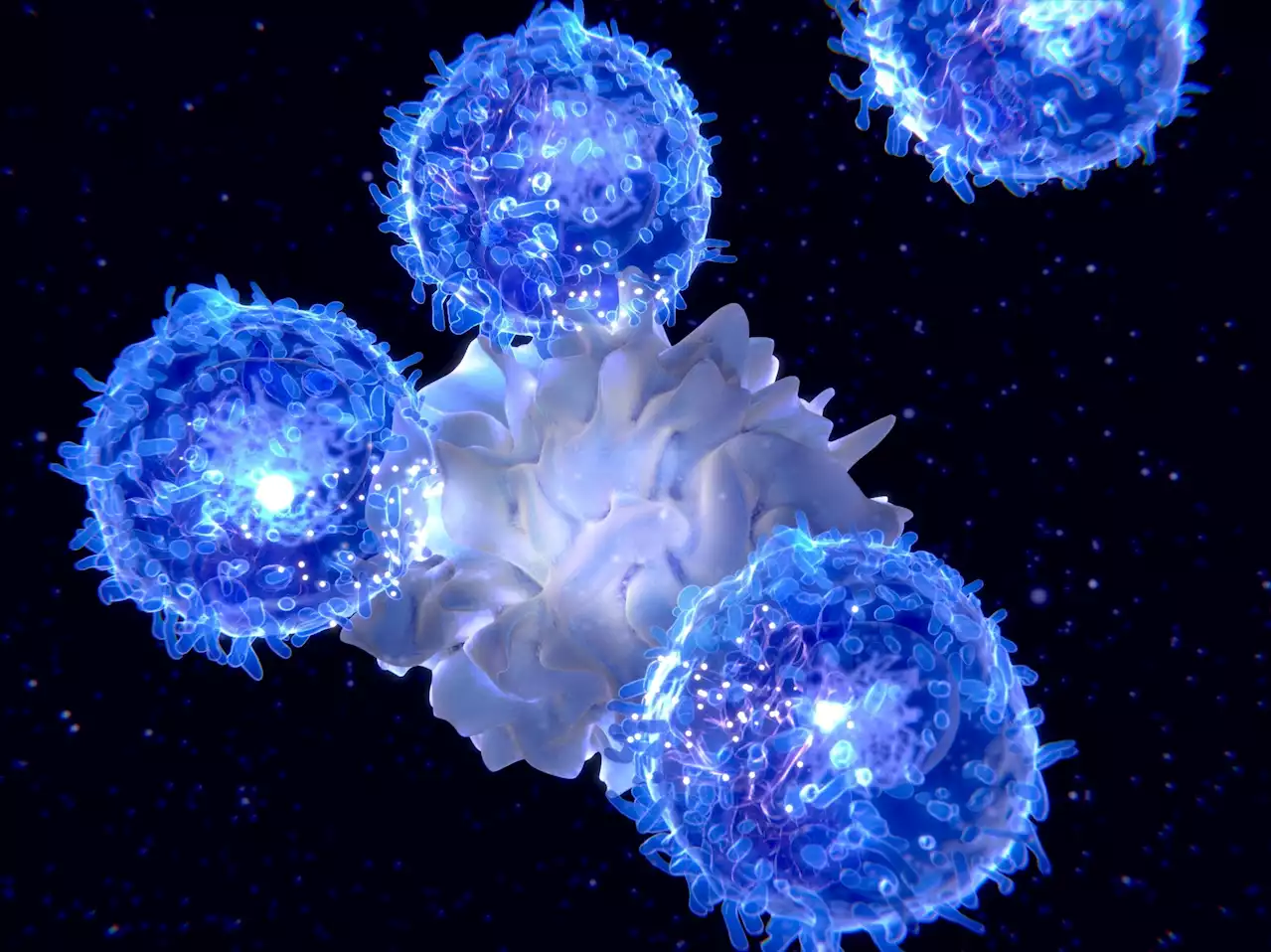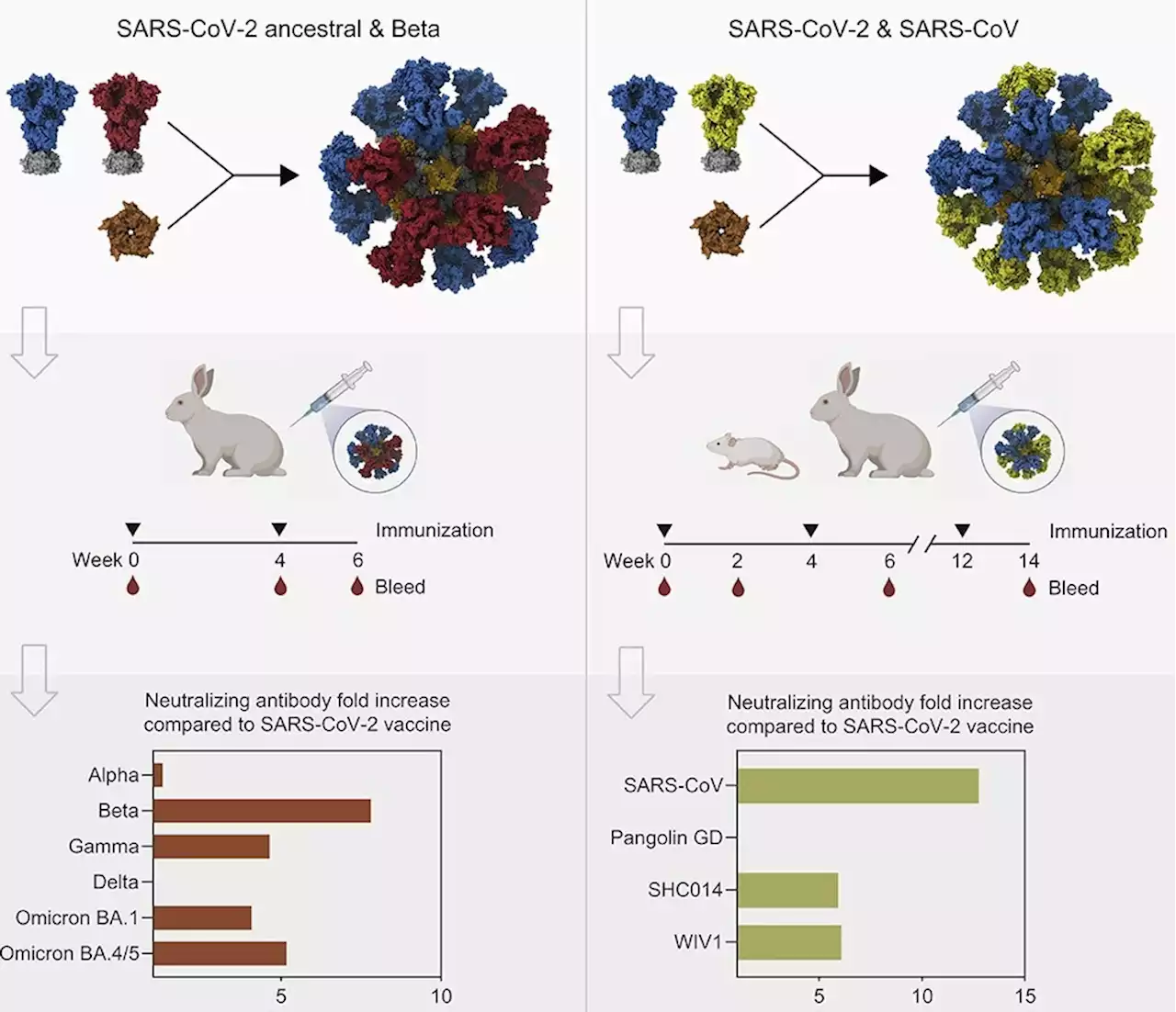Nanoparticles displaying SARS-CoV-1 and SARS-CoV-2 spikes induce broad antibody responses in animal model Antibody Nanoparticles SARS SARSCoV2 Coronavirus Disease COVID iScience_CP UW WeillCornell UvA_Amsterdam scrippsresearch
Coronavirus disease 2019 vaccines are based on the spike protein of the severe acute respiratory syndrome coronavirus 2 Wuhan-Hu-1 strain. Mutant SARS-CoV-2 variants are less sensitive to immune responses elicited by these vaccines. As such, vaccines incorporating sequence diversity may augment protection against novel SARS-CoV-2 variants.
The study and findings In the present study, researchers leveraged the I53-50 platform to co-display diverse spike proteins and evaluated the immune responses. First, they fused the N-terminus of component A to the C-terminus of the Beta variant’s spike protein through a glycine-serine linker. Then, after purification, the spike-A fusion protein was mixed with an equimolar quantity of component B for assembly.
A pseudovirus neutralization assay was performed to assess the neutralization of SARS-CoV-2 variants of concern , SARS-CoV-1, and animal CoVs . Ancestral spike NPs induced the most potent nAbs against ancestral strain but weaker against variants, with substantially lower titers against Beta and Omicron variants.
BALB/c mice and rabbits were immunized with the cocktail or mosaic NPs at 0, 4, and 12 weeks and bled at zero- and two weeks post-immunization. The authors re-analyzed data from previous studies that used the SARS-CoV-2 soluble spike antigen and NPs to immunize rabbits and mice using the same dosing regimen. SARS-CoV-2 spike NPs elicited three-fold greater neutralization than other immunogens in mice, albeit this was not statistically significant.
United Kingdom Latest News, United Kingdom Headlines
Similar News:You can also read news stories similar to this one that we have collected from other news sources.
 Memory B and T cells responses differ when induced by SARS-CoV-2 infections or booster vaccinationsIn a recent study published in The Journal of Immunology, a team of researchers from Japan examined the memory B and T cell responses to severe acute respiratory syndrome coronavirus 2 (SARS-CoV-2) spike protein after the booster dose of the coronavirus disease 2019 (COVID-19) messenger ribonucleic acid (mRNA) vaccine BNT162b2.
Memory B and T cells responses differ when induced by SARS-CoV-2 infections or booster vaccinationsIn a recent study published in The Journal of Immunology, a team of researchers from Japan examined the memory B and T cell responses to severe acute respiratory syndrome coronavirus 2 (SARS-CoV-2) spike protein after the booster dose of the coronavirus disease 2019 (COVID-19) messenger ribonucleic acid (mRNA) vaccine BNT162b2.
Read more »
 Long COVID brain fog and fatigue negatively impact all facets of daily lifeIn a recent study published in the International Journal of Environmental Research and Public Health, researchers explored the lived experiences of individuals with post-acute sequelae of severe acute respiratory syndrome coronavirus 2 (SARS-CoV-2) (PASC) to understand the impact of the symptoms such as fatigue and brain fog on the various aspects of life including employment, daily activities, and interpersonal relationships.
Long COVID brain fog and fatigue negatively impact all facets of daily lifeIn a recent study published in the International Journal of Environmental Research and Public Health, researchers explored the lived experiences of individuals with post-acute sequelae of severe acute respiratory syndrome coronavirus 2 (SARS-CoV-2) (PASC) to understand the impact of the symptoms such as fatigue and brain fog on the various aspects of life including employment, daily activities, and interpersonal relationships.
Read more »
 All trimesters of pregnancy carry the same COVID-19 riskA study in the American Journal of Obstetrics & Gynecology MFM journal aimed to analyze the effect of the trimester of SARS-CoV-2 infection on the progression of the disease in pregnant women.
All trimesters of pregnancy carry the same COVID-19 riskA study in the American Journal of Obstetrics & Gynecology MFM journal aimed to analyze the effect of the trimester of SARS-CoV-2 infection on the progression of the disease in pregnant women.
Read more »
 Preston Police tackle anti-social behaviour and bike thefts in two-day operationPic: South Ribble Police Preston Police have carried out a two-day operation to tackle the recent spike in bike thefts and anti-social behaviour in th
Preston Police tackle anti-social behaviour and bike thefts in two-day operationPic: South Ribble Police Preston Police have carried out a two-day operation to tackle the recent spike in bike thefts and anti-social behaviour in th
Read more »
 Memory B and T cells responses differ when induced by SARS-CoV-2 infections or booster vaccinationsIn a recent study published in The Journal of Immunology, a team of researchers from Japan examined the memory B and T cell responses to severe acute respiratory syndrome coronavirus 2 (SARS-CoV-2) spike protein after the booster dose of the coronavirus disease 2019 (COVID-19) messenger ribonucleic acid (mRNA) vaccine BNT162b2.
Memory B and T cells responses differ when induced by SARS-CoV-2 infections or booster vaccinationsIn a recent study published in The Journal of Immunology, a team of researchers from Japan examined the memory B and T cell responses to severe acute respiratory syndrome coronavirus 2 (SARS-CoV-2) spike protein after the booster dose of the coronavirus disease 2019 (COVID-19) messenger ribonucleic acid (mRNA) vaccine BNT162b2.
Read more »
